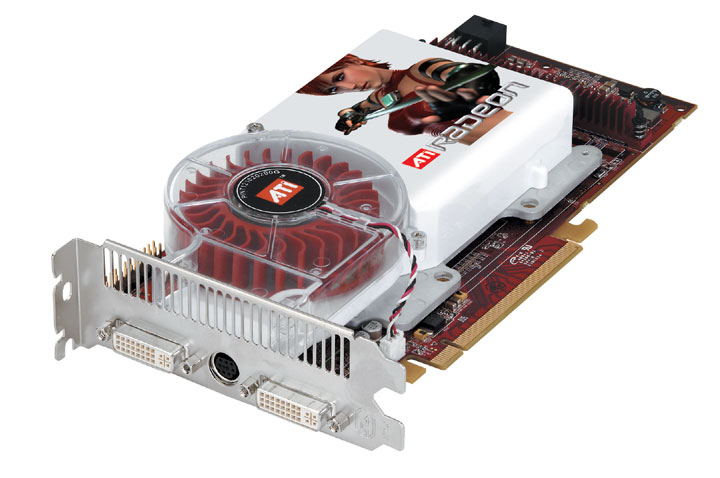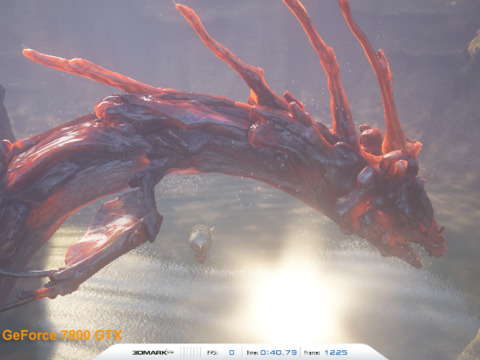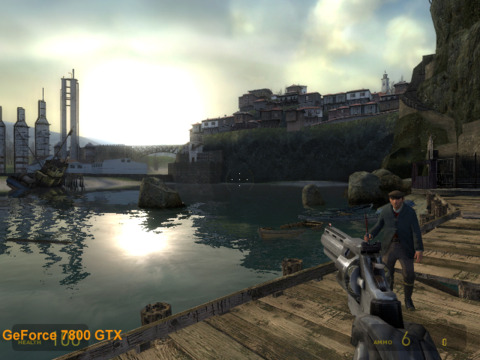ATI Radeon X1900 XTX Hands-On Preview
ATI unveils its newest flagship GPU, the Radeon X1900 XTX - a scant three months after launching it's previous flagship, the Radeon X1800 XT.
Design: Randall Montanari
Nvidia took off the kid gloves last year and traded them in for a pair of brass knuckles with the launch of the GeForce 7800 GTX, which had wide availability from day one and soundly spanked every video card in sight. It's one thing to make the fastest product on the market, and it's quite another to make sure people can actually go out and buy it. Dazed and confused, ATI had to get it together if it wanted to compete in a bare-knuckle boxing match with Nvidia.
ATI's been busy, lately--busy making up lost ground to Nvidia. In October of 2005, ATI announced the Radeon X1800 XT, with wide availability set for November 5. November 5 came and went with no sign of the X1800 XT. A short time later, in either early December or late November, ATI's darling finally arrived. With the launch of the Radeon X1900 family, however, the X1800 will end up having a life span slightly longer than a fruit fly.
ATI's new X1900 family includes the X1900 XTX, the X1900 XT, the X1900 Crossfire, and the X1900 All In Wonder. The cards--priced at $649, $549, $599, and $499 respectively--all come with bleeding-edge performance and features. In a new turn of events, the typically fashionably late All In Wonder series of cards will launch concurrently with the rest of the X1900 lineup.
Pixel Shaders | Core Clock | Memory Clock | Memory | MSRP | |
| Radeon X1900 XTX | 48 | 650MHz | 1.55GHz | 512MB | $649 |
| Radeon X1900 XT | 48 | 625MHz | 1.45GHz | 512MB | $549 |
| Radeon X1900 CrossFire | 48 | 625MHz | 1.45GHz | 512MB | $599 |
| Radeon X1900 AIW | 48 | 625MHz | 1.45GHz | 512MB | $499 |
Architecturally, the X1900 is similar to the X1800, but ATI decided to throw in even more of the good stuff. Whereas the X1800 has 16 pixel pipelines and 16 pixel shader processors, the X1900 XTX comes with 16 pixel pipelines and an astounding (and baffling) 48 pixel shader processors. It also has a core that's clocked at 650MHz and 512MB of GDDR3 RAM clocked at 1.55GHz. All these numbers boil down to a card that's very fast, in specific ways.
The X1900 series has the same ring bus memory controller found in the X1800, and it is designed to minimize latency and scale up compatibility with the fastest graphics memory to date. The chip uses eight 32-bit memory controllers, instead of four 64-bit controllers, to increase memory accesses. ATI has also switched to a fully associative cache to increase memory hit rates. All of these memory changes help to improve frame rate performance at high-resolution, high-image-quality settings where memory performance becomes the bottleneck. Improvements in hidden surface removal by culling out pixels not in view will also increase performance.
Since the X1900 and the X1800 families share many of the same specifications--texture units, amounts of memory, and memory bandwidth to name a few--you could come to the conclusion that the GPUs share the same bottlenecks, and you'd be partially correct. Over the years, ATI noticed that increasing all portions of the GPU equally would result in wasted processing power. ATI noticed that in current games, video cards perform five times as many arithmetic shader operations as they do texture shader operations. As a result, many of the improvements (namely the 48 pixel shader processors) to the X1900 come in the form of vastly improved arithmetic shader operations. The improvements, in turn, show large performance gains in games that use complex shaders.
Another feature that made it from the X1800 to the X1900 is the ability to perform antialiasing on games that use high dynamic range lighting and Shader Model 3.0. Nvidia's GeForce 7800 series can render Shader Model 3.0 and HDR, but in certain games, you cannot enable antialiasing while doing so.
The Radeon X1900 cards performed exceedingly well in our 3D graphics tests. The Radeon X1900 XT in dual-card CrossFire mode blasted past all the competitors by a healthy margin in Quake 4, Half-Life 2 Lost Coast, and both 3DMark tests. Unfortunately, we did not have a 512MB GeForce 7800 GTX duo available for SLI testing (we had to use its previous flagship GPU, the 256MB GeForce 7800 GTX, instead).
We're definitely impressed by ATI's new Radeon X1900 product lineup, and we're hopeful that cards will be available in volume this time around. ATI claims that the X1900 family of cards will be available starting January 24, and this time around, we're inclined to believe them. Early reports from around the Web indicate that online vendors are showing availability, with prices at or below ATI's MSRP.
3DMark06 - Image Quality comparison
Half Life 2 Lost Coast Image Quality Comparison
Radeon X1900 Family Performance
Test System Setup:
Athlon 64 FX-60 2.6GHz, 1GB (2 x 512MB) Corsair XMS DDR SDRAM (400MHz), Asus A8N SLI Deluxe Motherboard, ATI Reference Crossfire Motherboard, Seagate 7200.7 160GB NCQ SATA Hard Drive, Windows XP SP2.
Drivers : Forceware 81.98, Catalyst 6.1, Beta Catalyst Driver 8.203.3
Video Cards: Radeon X1900 XTX, Radeon X1900 XT, Radeon X1800 XT, GeForce 7800 GTX 256MB.
Image Quality Comparison Settings:
3DMark06 - 640x480 4xAA/8xAF SM3.0
Half Life 2 Lost Coast - 640x480 4xAA/8xAF Maximum Quality
Got a news tip or want to contact us directly? Email news@gamespot.com



Join the conversation